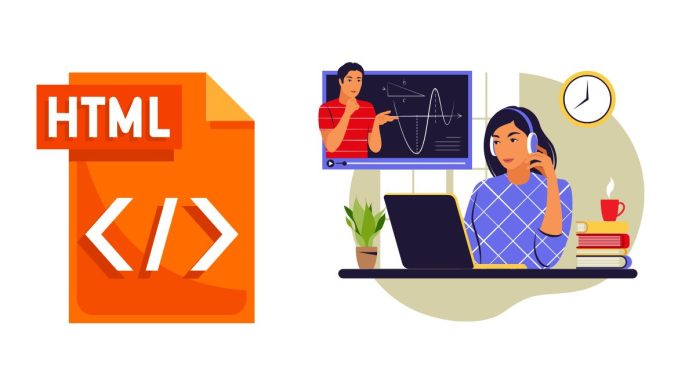HTML (HyperText Markup Language) is the foundational language for creating web pages and applications. Whether you’re a complete novice or looking to sharpen your skills, learning HTML is the first step toward mastering web development. In this tutorial, we’ll walk you through the basics of HTML, its key components, and how to create a simple webpage.
What is HTML?
HTML is the standard language used to structure content on the web. It uses a system of tags to define the elements of a webpage, such as headings, paragraphs, images, and links. Each HTML document is a mix of content (text, images, etc.) and instructions (tags) that tell web browsers how to display that content.
Here’s a basic example of an HTML document:
<!DOCTYPE html>
<html>
<head>
<title>My First Webpage</title>
</head>
<body>
<h1>Welcome to My Website</h1>
<p>This is my first webpage built using HTML!</p>
</body>
</html>
Why Learn HTML?
- Easy to Learn: HTML is beginner-friendly and doesn’t require prior programming knowledge.
- Web Development Foundation: It’s the building block for learning CSS, JavaScript, and other web technologies.
- Create and Customize Websites: Mastering HTML enables you to create your own websites and customize existing ones.
- High Demand: Knowledge of HTML is essential for web developers, marketers, and designers.
HTML Basics
1. Structure of an HTML Document
An HTML file has a defined structure:
<!DOCTYPE html>: Declares the document type.<html>: The root element that wraps all content.<head>: Contains metadata like the page title and links to external resources (e.g., CSS files).<body>: Contains the content displayed on the webpage.
2. Common HTML Tags
Here are some essential tags to get started:
- Headings:
<h1>to<h6>define headings of different sizes.<h1>This is a heading</h1> - Paragraphs:
<p>defines a block of text.<p>This is a paragraph.</p> - Links:
<a>creates hyperlinks.<a href="https://example.com">Visit Example</a> - Images:
<img>displays images.<img src="image.jpg" alt="Description"> - Lists:
- Ordered List:
<ol> - Unordered List:
<ul>
<ul> <li>Item 1</li> <li>Item 2</li> </ul> - Ordered List:
How to Create Your First Webpage
- Open a Text Editor
Use a simple text editor like Notepad (Windows) or TextEdit (Mac), or a code editor like VS Code. - Write HTML Code
Start with a basic HTML structure:<!DOCTYPE html> <html> <head> <title>My First Webpage</title> </head> <body> <h1>Hello World!</h1> <p>This is my first webpage.</p> </body> </html> - Save the File
Save the file with a.htmlextension, likeindex.html. - Open in a Browser
Double-click the file to open it in a browser and view your webpage.
Next Steps
Once you’ve mastered HTML basics, you can:
- Learn CSS to style your webpages.
- Explore JavaScript to add interactivity.
- Practice creating more complex layouts using HTML5 semantic tags like
<header>,<section>, and<footer>.
Conclusion
HTML is the foundation of the web and an essential skill for anyone interested in web development or design. With its straightforward syntax and limitless potential, HTML empowers you to create and customize webpages. Start practicing today, and you’ll be on your way to building beautiful websites in no time!


